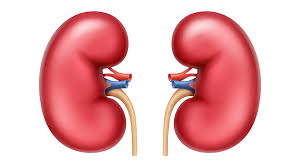10 acute pyelonephritis facts

In this article we will describe 10 acute pyelonephritis facts, focussing on its symptoms, causes, and treatment.
5 Key Points
-
Acute pyelonephritis is a bacterial infection of the kidneys that requires prompt treatment
-
It is more common in women than men, especially during pregnancy
-
The most common cause is Escherichia coli (E. coli)
-
Symptoms include loin pain, fever, and dysuria
-
Early diagnosis and treatment are crucial to prevent complications.
1. Definition
Types
-
Acute pyelonephritis: a sudden onset of infection, typically caused by bacterial infection
-
Chronic pyelonephritis: a long-term infection, often caused by recurrent or persistent bacterial infection.
2. Epidemiology
3. Risk Factors
-
Female sex: women are more likely to develop UTIs due to their shorter urethra
-
Pregnancy: pregnant women are at increased risk due to physiological changes
-
Diabetes: people with diabetes are more susceptible to UTIs
-
Urinary tract abnormalities: conditions such as vesicoureteral reflux or kidney stones increase the risk
-
Immunocompromised state: people with weakened immune systems are more prone to infection.
4. Causes
The most common cause of acute pyelonephritis is bacterial infection, typically:
-
Escherichia coli (E. coli): responsible for 70-80% of cases
-
Klebsiella pneumoniae: a common cause in people with underlying medical conditions
-
Other bacteria: such as Proteus mirabilis, Pseudomonas aeruginosa, and Staphylococcus saprophyticus.
5. Symptoms and Signs
-
Loin/back pain: pain in the side or back, often severe
-
Fever: high temperature, usually above 38°C
-
Dysuria: painful urination
-
Frequency: frequent urination
-
Urgency: sudden, intense need to urinate
-
Haematuria: blood in the urine
-
Nausea and vomiting: may occur, especially in severe cases.
6. Diagnosis
Diagnosis is based on a combination of:
-
Clinical presentation: symptoms and signs
-
Urinalysis: dipstick test to detect infection
-
Urine culture (MSU): to identify the causative organism.
-
Blood tests: to check for signs of infection or kidney damage
-
Imaging studies: such as ultrasound or CT scans to assess kidney damage or abnormalities
-
Voiding cystourethrogram (VCUG): to evaluate for vesicoureteral reflux (in a minority of patients)

Diffuse acute pyelonephritis in a 31-year-old woman. (A) Longitudinal ultrasound of the left kidney shows diffuse enlargement with decreased echogenicity and loss of corticomedullary differentiation. (B) Normal right kidney.
An ultrasound is usually done first – primarily to exclude other diagnoses, and to exclude obstruction causing pyelonephritis. It may show changes as shown below. But it is often normal. Milder cases treated at home with oral antibiotics do not need an US.
Differential Diagnosis
-
Lower urinary tract infection: such as cystitis, urethritis or prostatitis
-
Kidney stones: may cause similar symptoms, such as flank pain
- Kidney abscess
-
Appendicitis: may cause abdominal pain and fever.
7. Treatment
-
Antibiotics: to eradicate the bacterial infection. The duration of antibiotic treatment varies but is usually around 10-14 days (longer than the 5-7 days for a ‘normal UTI’ (cystitis). They may be oral (mild infection) or IV (mores severe infection, in hospital). It’s important to complete the full course of antibiotics even if symptoms improve
-
Pain management: to control flank pain and discomfort
-
Fluid replacement: to prevent dehydration.
-
Severe symptoms: such as severe flank pain, high fever, or vomiting
-
Difficulty urinating: or inability to pass urine
-
Visible blood in the urine (macrohaematuria)
-
Pregnancy: if you are pregnant and develop symptoms of UTI.
8. Complications
If left untreated or poorly managed, acute pyelonephritis can lead to:
-
Sepsis: a life-threatening condition caused by bacterial infection
-
Kidney damage: or scarring, which can lead to chronic kidney disease (CKD)
-
Recurrent UTIs: or persistent infection
-
Kidney abscess.
9. Prognosis
With prompt treatment, most people with acute pyelonephritis make a full recovery. However, some may experience:
-
Recurrent UTI
-
Persistent infection.
10. Prevention
Preventive measures include maintaining good hygiene, drinking plenty of fluids, urinating regularly, and emptying the bladder completely. For individuals prone to recurrent infections, prophylactic antibiotics might be considered.
Bonus fact
Chronic pyelonephritis / reflux nephropathy
Chronic pyelonephritis is not a common outcome of acute pyelonephritis, even if the patient has recurrent attacks. It is usually secondary to reflux nephropathy (which does not underlie the vast majority of attacks of acute pyelonephritis).
But, in a few patients, if acute pyelonephritis becomes a recurring or persistent issue, it can progress to chronic pyelonephritis, which leads to long-term kidney inflammation and scarring. This can lead to reduced kidney function, and CKD, over time.
Summary
We have described 10 acute pyelonephritis facts, and its symptoms, causes, and treatment. We hope it has been helpful.

